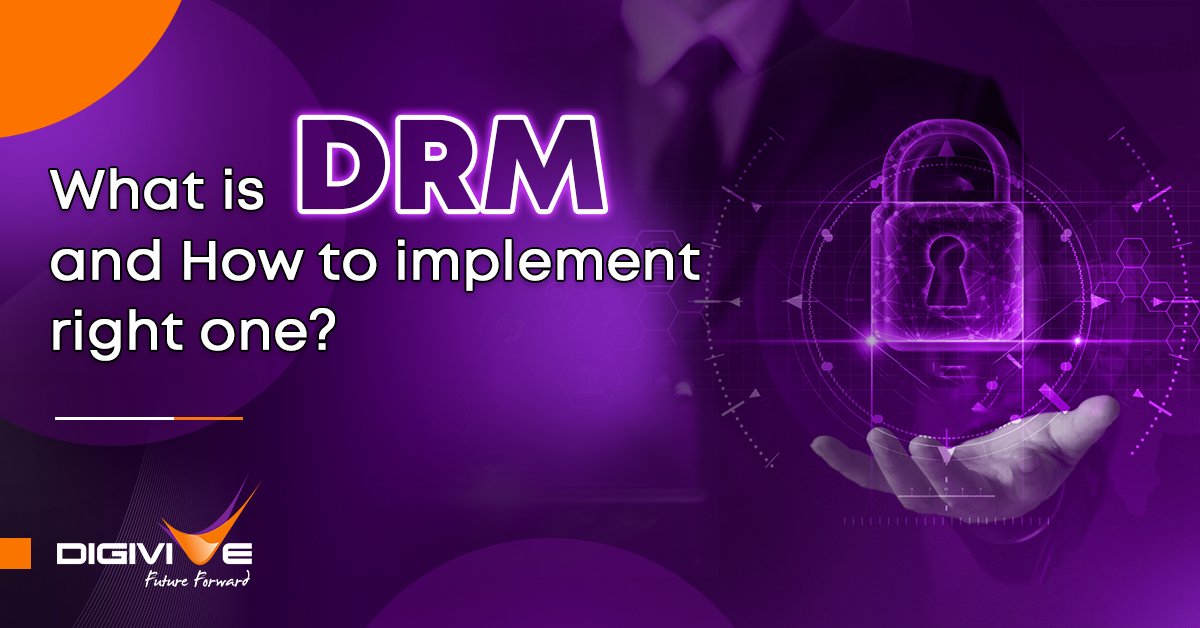
What is DRM and How to implement the right one?
Demystifying DRM: Understanding and Implementing the Right Solution
Introduction
Digital Rights Management, commonly known as DRM, is a set of technologies and strategies designed to protect the intellectual property and control the distribution of digital content. In an era where digital media is king, DRM plays a pivotal role in safeguarding the rights of content creators and preventing unauthorized distribution and piracy.
This blog will explore what DRM is and how to implement the right solution to ensure content security and intellectual property protection.
What is DRM?
DRM is a broad term encompassing various technologies, tools, and strategies used to protect and manage digital content, such as ebooks, music, videos, software, and more.
The primary objectives of DRM include:
Content Protection: DRM safeguards digital assets from unauthorized access, copying, and distribution. It ensures that only authorized users can access and utilize the content.
Access Control: DRM regulates who can access digital content, for how long, and on which devices. It can allow single or multiple device access and set time limits.
Monitoring and Reporting: DRM solutions often include monitoring features that allow content owners to track and audit how their content is used, which can be invaluable for compliance and analytics.
Encryption: DRM uses encryption techniques to scramble content, making it unreadable without the appropriate decryption key.
Authentication and Authorization: DRM verifies the identity of users and authorizes access to content based on predefined rules and permissions.
Expiration and Revocation: DRM can enforce expiration dates for content access and even revoke access if necessary.
How to Implement the Right DRM Solution :
Selecting the right DRM solution is crucial for content creators, publishers, and businesses aiming to protect their intellectual property. Here’s a step-by-step guide to implementing the right DRM solution:
Assess Your Needs:
Start by understanding the specific needs of your digital content. Different types of content may require different DRM approaches.
Understand Your Audience:
Know your audience and their preferences. Some users may be more tolerant of DRM restrictions than others. Tailor your solution to meet their expectations.
Compliance and Legal Considerations:
Ensure that your DRM solution aligns with copyright laws and industry-specific regulations.
Choose the Right DRM Technology:
Select a DRM technology that suits your needs. Some popular DRM technologies include Adobe Content Server, Microsoft PlayReady, and Widevine by Google.
Integration with Your Content Delivery Platform:
Your chosen DRM solution should integrate seamlessly with your content delivery platform. This ensures a smooth user experience.
User Authentication:
Implement a robust authentication system that verifies the identity of users. This may include username and password, two-factor authentication, or single sign-on (SSO).
Access Control and Permissions:
Define who can access your content, when, and on which devices. Ensure that the access control system is flexible enough to accommodate various use cases.
Monitoring and Reporting:
Incorporate monitoring and reporting features into your DRM solution. This allows you to track content usage and detect any suspicious activity.
Encryption and Secure Key Management:
Employ strong encryption techniques to protect your content. Secure key management is essential to ensure that only authorized users can decrypt the content.
Regular Updates and Maintenance:
DRM technology evolves over time, and so do the threats to content security. Stay up-to-date with the latest DRM updates and security patches.
User Education:
Inform your users about the DRM restrictions in place. Transparency can help manage user expectations and reduce frustration.
Digital Rights Management is a vital tool for content creators and businesses in the digital age. By understanding your specific needs, selecting the right DRM technology, and implementing robust access controls, authentication, and encryption, you can protect your intellectual property and provide a secure and seamless user experience. Remember that DRM solutions should be flexible, adaptable, and compliant with legal requirements, ensuring that your content remains protected without compromising usability.
FAQ’s
What is DRM and why is it used?
Digital Rights Management, is a technology used to protect digital content from unauthorized copying and distribution. It helps content owners control access, usage, and distribution of their intellectual property, ensuring copyright compliance and revenue protection.
How do you implement DRM?
Implementing DRM involves integrating our robust DRM solutions into your digital content distribution platform. This includes encrypting content, managing user licenses, and applying access controls, thus safeguarding your content against piracy and unauthorized access.
How does DRM work?
DRM operates by encrypting digital content and assigning unique licenses to authorized users. These licenses dictate who can access, view, or share the content, preventing unauthorized distribution and ensuring content owners maintain control.
Why is DRM important?
DRM is crucial in the digital age to safeguard intellectual property rights, prevent content piracy, and enable content creators to monetize their work. It provides a secure environment for distributing and managing digital content.
Benefits of Digital Rights Management (DRM) Software.
The benefits of DRM software include content protection, control over content distribution, tracking user interactions, monetization through secure payment models, and enhanced customer trust. It empowers content owners to maximize the value of their digital assets.
How much does digital rights management cost?- DRM Cost
The cost of digital rights management can vary depending on the scale and complexity of your content distribution needs. We offer tailored pricing models to suit the unique requirements of your business, making it cost-effective for both small enterprises and large corporations.